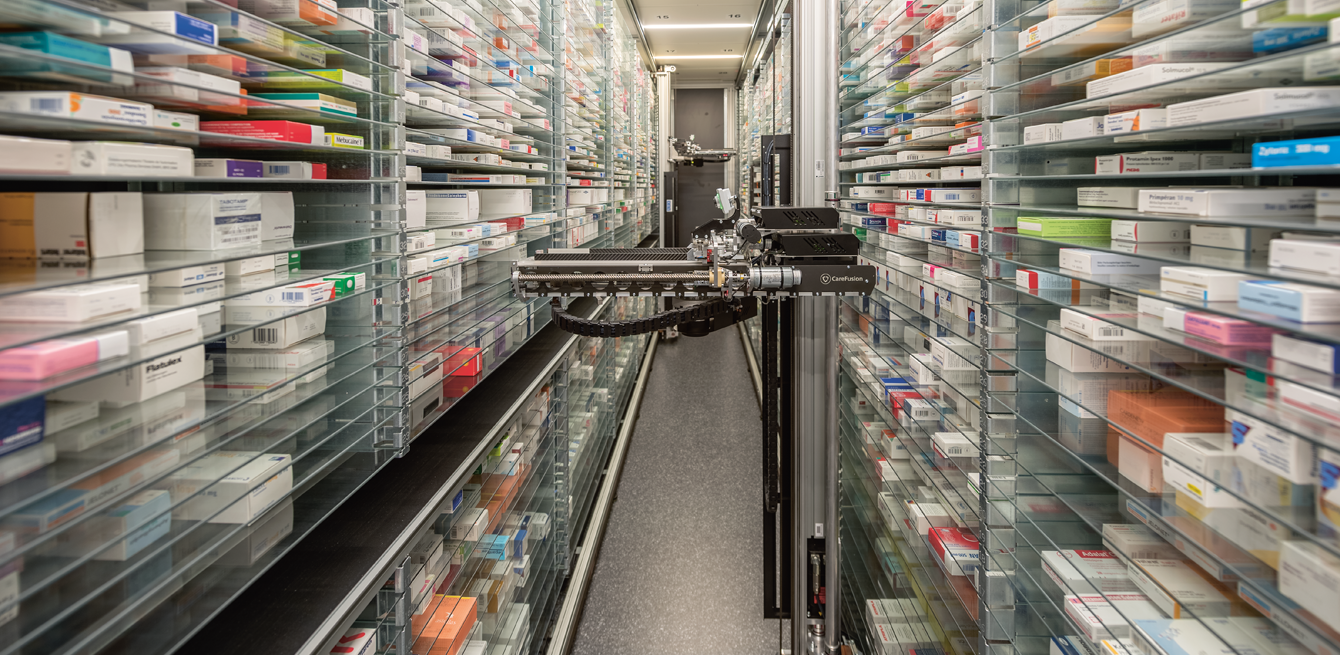
PHARMACY A medicine’s packaging is carefully chosen based on its content. The packaging must protect the medicine while also providing consumers with safe and easy access. Here are a few examples.
Plastic or glass, vials or aluminium blister packs—the type of material and format used to package a medicine are closely related to its content. “The container that comes into direct contact with the product, which is also called the primary packaging, aims first and foremost to protect the medicine from physical impacts, light and oxidation,” says Bertrand Hirschi, deputy head pharmacist at Lausanne University Hospital (CHUV). A medicine’s packaging also includes the cardboard box that surrounds it, or its secondary packaging. “For a medicine to be selected and distributed at a hospital, it must meet a certain number of criteria, including traceability, readable instructions and an indication of its dosage,” says Bertrand Hirschi. “This information, which can feature on either the primary or secondary packaging, makes the medicine easier to recognise and helps ensure it is used correctly.” The CHUV pharmacy has three “Robin” robots (see photo) for stocking boxes weighing a maximum of 800 grammes. Each device contains nearly 16,000 boxes and stores 940 different products.
A plastic vial of saline solution for thinning nasal mucus. The product can be administered directly after manually removing the cap. Many medicine containers are made out of plastic, which offers many advantages: it is light, impermeable to gas and odours, transparent and can be made into a variety of shapes.
The analysis of cerebrospinal fluid, which flows around the spinal cord, can reveal the presence of bacteria, viruses or other abnormal substances. Collecting the fluid can cause dizziness and nausea, so an analgesic must be injected prior to the procedure. The safest way to do so is to use a sterile plastic vial, which in turn is packaged in plastic to ensure it remains sterile. “Glass cannot be used for this procedure,” says Jean-Christophe Devaud, the pharmacist in charge of logistics
at CHUV. “If glass debris reaches the spinal column, it could cause permanent damage to the patient.”
“Glass is the ideal material for liquids,” says Bertrand Hirschi. “It is long-lasting, inert, clean and transparent.” Just like this calcium solution (right), glass is used to contain many medicines. To open the vial, all you have to do is break the upper part of the container at the point where it narrows, below the blue dot. Drinkable magnesium solution (above) is also packaged in glass vials. The format makes it easy to quickly consume the exact dose.
Some medications require additional precautionary measures. This bottle, which contains an intravenous chemotherapy solution, is covered with a transparent plastic film. “Toxic powder residues have been found on some containers,” says Jean-Christophe Devaud. “Starting over a decade ago, manufacturers added protective films to isolate these residues and protect the health professionals who handle them.” The bottle is made out of tinted glass to protect the medicine from the light, which degrades the product and shortens its shelf life.